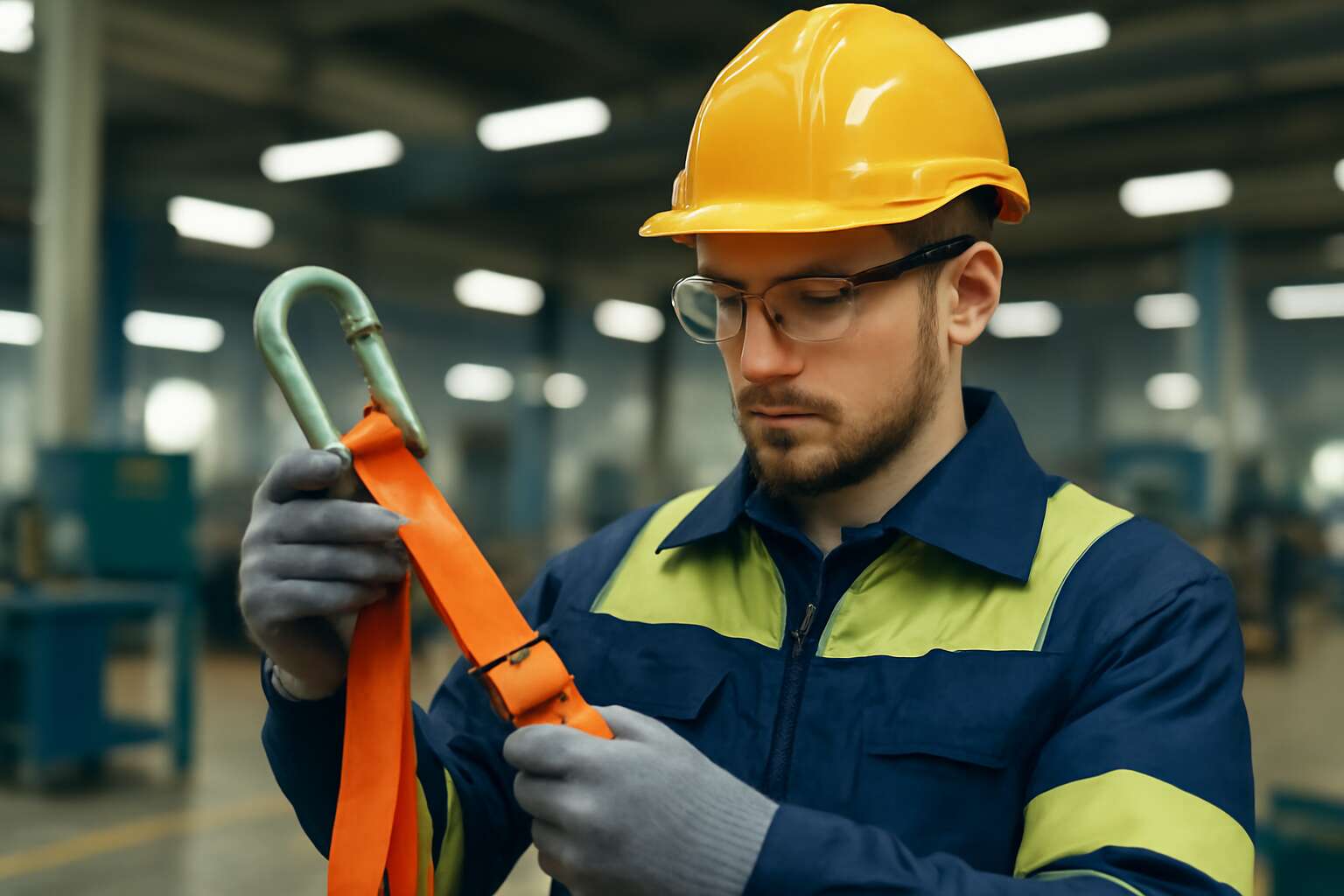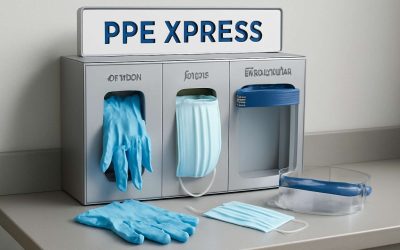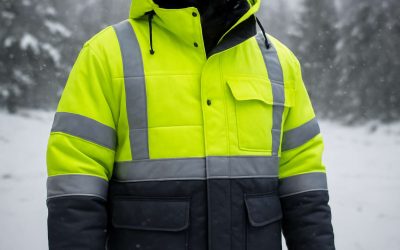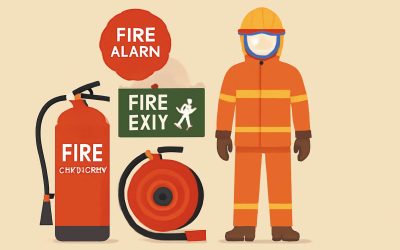Understanding Safety Equipment
What Are Safety Equipment Types and Their Uses?
Understanding safety equipment is crucial in an environment where hazards lurk around every corner. Every piece of safety equipment serves a purpose, from protecting workers from head injuries to shielding their eyes from debris. It’s a silent guardian, yet one that can mean the difference between safety and tragedy.
When faced with safety equipment questions, many wonder which types are most effective for specific tasks. In South Africa, industries such as construction and mining require specialized gear that adheres to strict safety standards. Knowing the different safety equipment types and their uses can prevent accidents before they happen. For example, helmets protect against falling objects, while high-visibility clothing ensures workers remain seen in hazardous conditions.
To clarify, here are some common safety equipment categories:
- Personal protective gear (PPE) such as gloves, masks, and eye protection
- Fall arrest systems for high elevations
- Respiratory equipment to safeguard against airborne hazards
Understanding these essentials not only answers safety equipment questions but also empowers professionals to make informed decisions, ensuring safety is never compromised.
Common Safety Gear for Different Industries
In industries like construction and mining across South Africa, safety equipment isn’t just a precaution—it’s a lifeline. With hazards lurking in every shadow, understanding the nuances of common safety gear becomes paramount. The stakes are high, and safety equipment questions often revolve around the most effective tools for specific environments. From steel-toed boots that fend off crushing blows to respirators that combat airborne toxins, each piece plays a vital role in safeguarding lives.
In these high-risk fields, specialized safety equipment such as fall arrest systems and high-visibility clothing are indispensable. Workers often ask which gear is crucial for their tasks, and the answer lies in a clear understanding of industry-specific needs. For example, in mining operations, robust helmets and respiratory protection are non-negotiable, while construction sites demand comprehensive PPE to prevent injuries from falling objects or debris. Mastering these safety equipment questions empowers professionals to select the right gear, creating a safer work environment that could mean the difference between life and tragedy.
Importance of Proper Safety Equipment Selection
In the chaotic world of construction and mining, where accidents can happen faster than a jackhammer’s buzz, choosing the right safety equipment isn’t just smart—it’s essential. Surprisingly, a staggering 75% of workplace injuries could be avoided with proper safety gear and informed choices. That’s where understanding safety equipment questions becomes a crucial part of the safety puzzle.
Every site has its quirks—some demand steel-toed boots that can withstand a trampling herd, while others call for respirators that battle airborne toxins like a superhero. Asking the right safety equipment questions ensures you’re not just throwing PPE at the problem but selecting tools tailored to your specific environment. Mastering these inquiries might just save a life or two, making safety gear not just a precaution but a powerful line of defense against workplace calamities.
Safety Equipment Standards and Regulations
Key Certifications for Safety Equipment
In the intricate dance of workplace safety, understanding safety equipment standards and regulations is paramount. With South Africa’s evolving safety landscape, ensuring your safety gear meets the right certifications is not just a matter of compliance but of genuine concern for well-being. After all, a helmet that doesn’t pass muster is as useful as a screen door on a submarine.
Key certifications serve as the gold standard, assuring that safety equipment questions are addressed with rigor and precision. For example, products bearing the South African Bureau of Standards (SABS) mark indicate adherence to stringent local benchmarks, while international certifications like ISO 45001 underscore a commitment to occupational health. When selecting safety gear, it’s wise to look for these recognized marks—your first line of defense against subpar equipment.
Numbers tell a compelling story: nearly 80% of workplace accidents could be mitigated through proper safety equipment and compliance with regulatory standards. To navigate this labyrinth, consider the following critical certifications:
- SABS Certification
- ISO 9001 Quality Management
- CE Marking for European Standards
- ANSI Standards for American Safety Equipment
By understanding these certifications, safety officers and managers can confidently address safety equipment questions, ensuring that every piece of gear not only fits but also functions at peak standards—because in the realm of safety, mediocrity simply isn’t an option.
Regulatory Bodies Governing Safety Gear
In the shadowed corridors of industrial progress, safety equipment standards and regulations serve as the unseen guardians—silent sentinels that ensure every helmet, glove, and harness withstands the chaos of the workplace. In South Africa, regulatory bodies such as the South African Bureau of Standards (SABS) wield formidable authority, their certifications etched into gear as a mark of unwavering quality. These standards are not mere formalities but vital shields against the abyss of negligence.
Governing safety gear involves a meticulous dance with international and local standards, each one a cryptic sigil of trust. To navigate the labyrinth of safety equipment questions, it helps to understand the authoritative institutions that oversee compliance. For instance, the following bodies are instrumental in defining the boundaries of safety:
- SABS – Setting the local benchmarks that every piece of gear must meet.
- ISO 45001 – The global beacon for occupational health and safety management systems.
- European CE marking – Signaling conformity to rigorous European standards.
- ANSI standards – The American benchmarks that influence safety gear design and testing.
Deciphering these regulations is no trivial pursuit but a vital quest to shield workers from unseen perils. When safety equipment questions arise, recognizing the authority behind each certification transforms uncertainty into confidence—the difference between merely passing inspection and truly safeguarding lives.
Legal Requirements for Workplace Safety Equipment
In the high-stakes world of workplace safety, understanding the labyrinth of safety equipment standards and regulations is akin to possessing a secret decoder ring—except this one ensures lives aren’t lost in the chaos. South Africa mandates strict adherence to these legal requirements, making it crucial for employers and safety managers alike to stay ahead of the compliance curve. After all, a helmet isn’t just a helmet if it doesn’t meet regulatory standards; it’s a potential liability waiting to happen.
To navigate these safety equipment questions confidently, knowing which standards apply is essential. Local regulations often align with international benchmarks, creating a mosaic of compliance that can seem daunting. For example, the South African Bureau of Standards (SABS) sets the tone locally, while global standards like ISO 45001 and European CE marking influence the safety gear landscape. Here’s a quick overview:
- SABS certification ensures gear meets South African safety benchmarks.
- ISO 45001 provides a framework for occupational health and safety management systems.
- European CE marking indicates conformity to European safety directives.
- ANSI standards shape safety gear design and testing in the United States.
In the end, answering safety equipment questions isn’t just about ticking boxes; it’s about embedding a culture of safety rooted in rigorous legal and regulatory standards. Because in workplaces where hazards lurk behind every corner, shortcuts are only safe in fairy tales.
Choosing the Right Safety Equipment
Factors to Consider When Selecting Safety Gear
Choosing the right safety equipment is a pivotal decision that can mean the difference between safety and catastrophe in the workplace. When faced with diverse safety equipment questions, it’s crucial to consider several factors that transcend mere compliance. The environment’s unique hazards, the durability and comfort of the gear, and its suitability for the specific task at hand all play a vital role.
In South Africa’s dynamic industries, safety gear must withstand extreme conditions—think harsh sun, abrasive materials, or corrosive substances. An often-overlooked aspect is the integration of advanced materials that enhance both protection and comfort. For instance, selecting safety helmets with reinforced shells or high-visibility vests made from breathable fabrics addresses multiple safety equipment questions simultaneously.
Ultimately, thorough research and asking pointed safety equipment questions about certifications, material quality, and fit will lead to smarter choices—transforming safety gear from a mere requirement into a trusted shield.
Safety Equipment Fit and Comfort
In the labyrinthine world of occupational safety, the quest to find the perfect fit for safety gear often feels like navigating a maze of conflicting priorities. Studies reveal that improperly fitted safety equipment can diminish protection by up to 70%, emphasizing that fit and comfort are not mere luxuries but essential safeguards. When addressing safety equipment questions, one must look beyond superficial sizing charts—consider how gear conforms to the contours of the wearer’s body, ensuring mobility without sacrificing protection.
Choosing the right safety equipment hinges on understanding that comfort is an unspoken mandate for compliance. Ill-fitting helmets or constrictive gloves not only impair performance but also erode morale. For example, safety helmets with adjustable straps and ergonomically contoured designs offer a seamless integration of safety and comfort. An often-overlooked aspect is the breathability of fabrics, particularly in South Africa’s sweltering conditions, where heat stress can compromise safety.
Engaging with safety equipment questions that delve into material flexibility, moisture-wicking properties, and ergonomic fit leads to smarter, more sustainable choices. When safety gear aligns with the wearer’s needs, it transforms from mere regulatory compliance into a reliable shield—empowering workers to perform at their best amid challenging environments. After all, safety equipment that fits well fosters confidence, resilience, and, ultimately, a safer workplace.
Durability and Material Quality
Durability and material quality are the silent guardians of effective safety equipment, especially in South Africa’s ever-changing environment. When safety equipment questions revolve around how long gear will serve and withstand the harsh realities of a demanding workplace, the answer lies in choosing robust, high-grade materials that resist wear and tear. The strength of the fabric, the resilience of the plastics, and the integrity of the metal components all contribute to a gear’s longevity and reliability—essentials when safety is on the line.
Focusing on material quality transforms safety equipment from mere compliance into a fortress of protection. For instance, safety gloves made from abrasion-resistant leather or advanced synthetic fibers offer not only durability but also flexibility—crucial for handling intricate tasks without sacrificing safety. Moreover, considering features like UV resistance and corrosion-proof coatings can extend the lifespan of safety gear in outdoor environments, reducing replacement costs and ensuring continuous protection.
When faced with safety equipment questions, it’s wise to prioritize products that undergo rigorous testing and meet the highest certifications. An informed choice, rooted in understanding the materials’ integrity, elevates safety standards and fosters confidence among workers. After all, gear that endures the rigors of the job becomes more than just equipment—it becomes a trusted partner in safeguarding lives.
Safety Equipment Maintenance and Inspection
Routine Checks and How to Perform Them
Safety equipment maintenance is the backbone of a resilient workplace, yet it often remains overlooked until an incident occurs. Regular inspection routines are essential to ensure that safety gear performs flawlessly when it’s needed most. In South Africa, where safety standards continually evolve, understanding how to perform routine checks can make all the difference. These inspections are not just about visual assessments but involve meticulous testing of functionality, integrity, and compliance.
Performing routine checks involves a systematic approach. First, examine safety helmets for cracks or deformation. Next, inspect harnesses for frayed straps or compromised stitching. Equipment like fire extinguishers must be checked for pressure levels and expiration dates. To streamline this process, consider using a safety equipment checklist. This simple tool helps ensure no critical component is overlooked during inspections. Remember, addressing safety equipment questions proactively can prevent accidents and save lives!
When and How to Replace Safety Equipment
Every seasoned safety officer understands that safety equipment maintenance is not merely a routine task but a vital safeguard for human lives. When safety gear surpasses its designated lifespan or exhibits signs of deterioration, it ceases to serve its purpose effectively. Recognising precisely when to replace safety equipment requires a keen eye and a thorough understanding of wear and tear. In South Africa’s evolving safety landscape, staying ahead of these indicators is essential to maintaining compliance and ensuring worker safety.
To determine the right moment for replacement, consider factors like exposure to harsh environmental conditions, frequent use, and any damage identified during inspections. For example, safety harnesses with frayed straps or fire extinguishers that have lost pressure must be replaced promptly. Addressing safety equipment questions during routine checks can uncover potential vulnerabilities before they lead to accidents. When in doubt, adopting a systematic approach—such as following a numbered checklist—can streamline decision-making and uphold safety standards across industries.
Storage Best Practices for Longevity
In the shadowed corridors of industry, where unseen hazards lurk and safety is a fragile illusion, maintenance and inspection of safety equipment become the silent guardians of life. Proper storage practices are not merely an administrative chore but a ritual that preserves the integrity of vital gear, shielding workers from the unseen perils that threaten their existence. When safety equipment questions arise—regarding how best to preserve or care for gear—the answers often lie in meticulous routines that extend their lifespan and maintain their efficacy.
Storing safety equipment in a controlled environment—away from moisture, extreme temperatures, and corrosive elements—can dramatically extend its durability. For example, safety helmets should be kept in a cool, dry place, avoiding exposure to sunlight and chemicals that might weaken their structure. Regularly inspecting stored gear for signs of decay, such as cracks, corrosion, or frayed straps, is essential to prevent silent failures that might occur when they are needed most.
To streamline the process, some organizations adopt a systematic approach, such as a numbered checklist, to ensure each piece of safety equipment is examined thoroughly during routine inspections. This method helps to answer safety equipment questions swiftly, ensuring nothing is overlooked—be it a worn-out harness or a pressure gauge nearing its limit. Ultimately, diligent storage and consistent checks forge a silent barrier against the chaos of accidents, keeping safety equipment questions at bay and life preserved in the shadows of industry’s relentless march.
Safety Equipment Troubleshooting
Common Issues with Safety Gear
Even the most reliable safety equipment can fall prey to unforeseen issues if not properly maintained or inspected. It’s a sobering fact that equipment failure causes over 20% of workplace accidents, emphasizing the importance of addressing common safety gear issues promptly. When safety equipment questions arise—whether about a harness’s integrity or a helmet’s fit—it’s crucial to act swiftly. Hidden damage or wear can compromise the entire safety system, turning a protective device into a potential hazard.
Many safety gear problems stem from improper storage or routine neglect. Cracks in helmets, frayed straps on harnesses, or corrosion inside safety gloves can be subtle yet deadly. Regular inspections are essential, and knowing when to replace safety equipment can make the difference between safety and catastrophe. Sometimes, simple steps like checking for discoloration or deformities can reveal issues that demand immediate attention, preventing minor problems from becoming major safety questions down the line.
Solutions for Damage or Wear
When safety gear shows signs of wear or damage, swift troubleshooting can mean the difference between safety and disaster. Cracks in helmets, frayed straps on harnesses, or tiny tears in gloves often go unnoticed until it’s too late. Recognizing these issues early requires a keen eye and a proactive mindset. Regular visual inspections are essential, but knowing how to troubleshoot effectively elevates safety standards. In scenarios where damage isn’t immediately visible, tactile checks—like feeling for rough patches or deformities—can reveal hidden dangers.
Addressing safety equipment questions involves more than just identifying damage; it’s about understanding the right course of action. For minor issues, simple repairs or cleaning might suffice, but when in doubt, replacing the equipment is always the safest choice. Remember, safety equipment questions often point to larger underlying concerns about equipment integrity and safety compliance. Ensuring that every piece of gear is in top condition safeguards workers and instills confidence on the job. Never underestimate the importance of thorough troubleshooting—your safety depends on it!
When to Seek Professional Repair or Replacement
In the realm of occupational safety, a startling 75% of accidents could be prevented with proper maintenance and timely replacement of safety gear. Yet, even in the most diligent workplaces, safety equipment questions often linger—when should a helmet be retired, or a harness deemed unfit? Recognizing the signs that demand professional repair or replacement is crucial for safeguarding lives and maintaining compliance with South African safety standards.
If a piece of safety equipment shows persistent damage, such as cracks, deformations, or frayed straps that resist simple fixes, it’s time to seek expert advice. Sometimes, the damage is subtle—a tiny tear in a glove or a slight deformity in a helmet—that can evade casual inspection. In such cases, consulting with specialists or certified repair services ensures that gear maintains its protective integrity. Remember, when doubts arise from safety equipment questions, err on the side of caution. Replacing gear proactively not only preserves safety standards but also demonstrates a commitment to worker well-being—something every employer should take seriously.
In instances where equipment has been subjected to extreme wear or hazardous conditions, a professional assessment becomes indispensable. To streamline this process, consider a simple checklist:
- Assess visible damage and deformation
- Evaluate any functional impairments
- Confirm compliance with South African safety regulations
- Seek certified repair or replace if necessary
Such vigilance ensures safety equipment questions are answered decisively, preventing avoidable mishaps. After all, in the dance of workplace safety, knowing when to seek professional repair or replacement is the rhythm that keeps everyone in step—and safe.
FAQs About Safety Equipment
How to Ensure Safety Equipment Meets Standards?
Safety equipment questions often revolve around the core concern: how do you ensure your gear is up to snuff? After all, in the unpredictable world of workplace hazards, relying on subpar safety equipment is akin to bringing a spoon to a gunfight. Ensuring your safety gear meets standards isn’t just about compliance; it’s about real protection in real time. The key is verifying that your safety equipment adheres to recognized certifications and regulatory guidelines—think of it as giving your gear a gold star for quality.
One common query we encounter is, “How can I be certain my safety equipment is compliant?” The answer involves a combination of checking for official certification marks, understanding the standards set by regulatory bodies, and regularly performing routine checks for wear and tear. Remember, safety equipment questions often boil down to: am I protected? If your gear isn’t regularly inspected and maintained, even the most advanced safety equipment can become a ticking time bomb. So, stay vigilant and ask those safety equipment questions—your safety depends on it!
Are Custom-Fitted Safety Gear Better?
FAQs About Safety Equipment: Are Custom-Fitted Safety Gear Better?
When it comes to safety equipment questions, one of the most common debates is whether custom-fitted safety gear truly offers better protection. The short answer? Absolutely. Standard gear might be the quick fix, but tailored safety equipment ensures a snug, secure fit—think of it as the difference between a one-size-fits-all hat and a bespoke crown. In hazardous workplaces across South Africa, a perfect fit can mean the difference between safety and catastrophe.
Custom safety gear isn’t just about comfort; it’s about optimizing safety. Properly fitted equipment reduces movement and slippage, which are often culprits in safety breaches. Moreover, it minimizes discomfort, encouraging workers to wear their gear consistently, rather than tossing it aside after a few hours. Remember, safety equipment questions often revolve around fit and function—so, don’t settle for off-the-shelf solutions when your protection is on the line.
While custom safety gear might come at a higher initial cost, the investment pays off in enhanced protection, durability, and peace of mind. For workplaces where hazards are unpredictable, it’s worth pondering: isn’t your safety worth a tailored touch?
What Are the Latest Innovations in Safety Equipment?
Innovation in safety equipment continues to reshape workplace protection, especially in South Africa’s diverse industries. As technology advances, so do the solutions designed to keep workers safe. One of the most exciting recent developments is the integration of smart safety gear with sensors that monitor environmental conditions, worker vitals, and equipment status in real-time.
This progress addresses common safety equipment questions by enhancing situational awareness and enabling proactive responses. For example, wearable devices now alert workers if they’re in danger of exposure to harmful chemicals or extreme temperatures. Additionally, advancements in materials—like lightweight, high-strength composites—provide durable protection without sacrificing comfort.
Another emerging trend is modular safety gear, which allows for customizable configurations tailored to specific hazards. This innovation makes safety equipment questions about adaptability increasingly irrelevant because workers can now adjust their gear quickly and effectively. Overall, these innovations demonstrate how safety equipment questions are driving a future where workplace safety is smarter, more responsive, and more reliable than ever before!




0 Comments